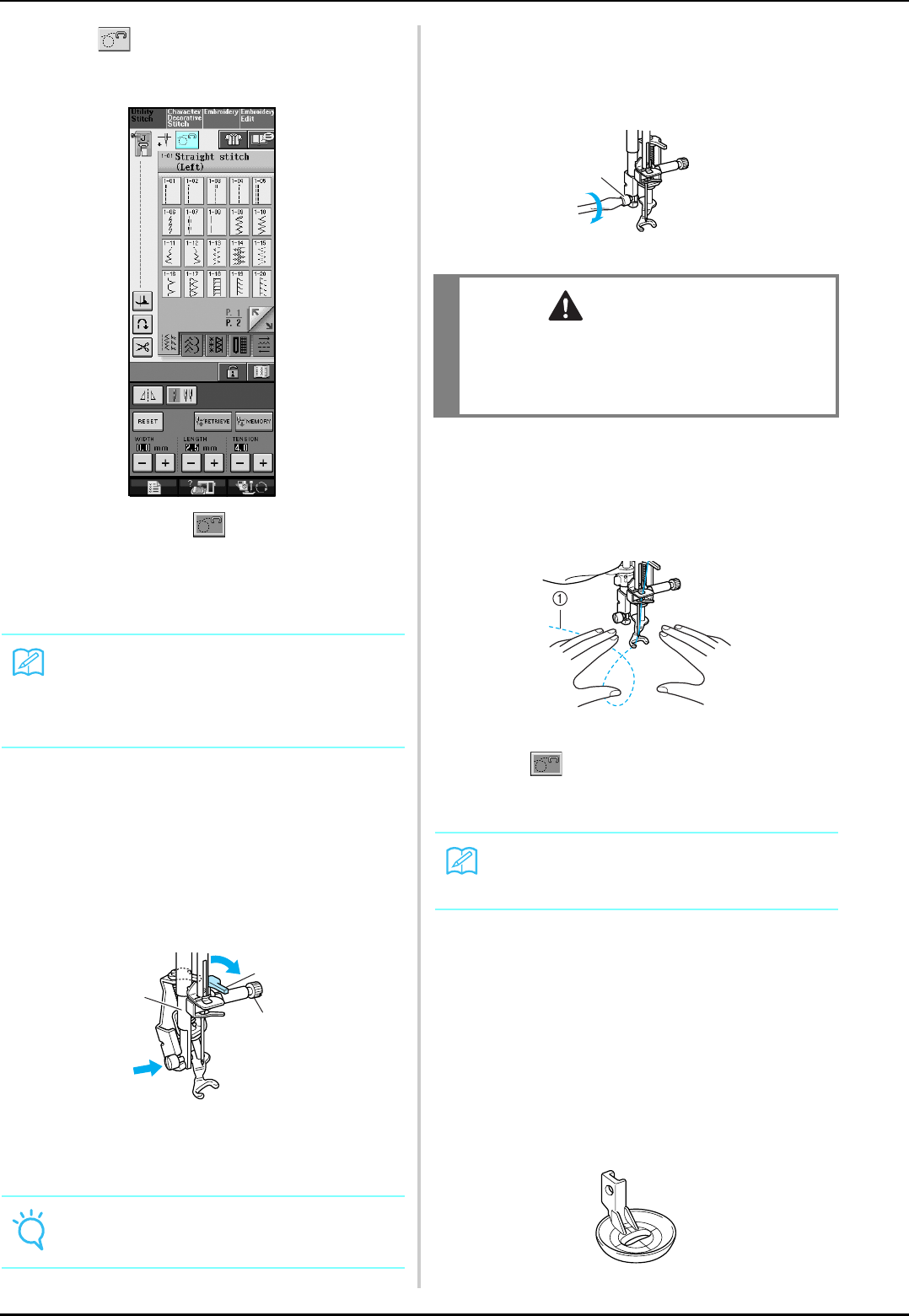
SEWING THE STITCHES
86
a
aa
a
Press to set the machine to free-
motion sewing mode.
→ The key appears as , and the quilting foot is
raised to the necessary height for free-motion
sewing.
b
bb
b
Select a stitch.
c
cc
c
Remove the presser foot holder (see page
38).
d
dd
d
Attach free-motion open toe quilting foot
“O” by positioning the pin of the quilting
foot above the needle clamp screw and
aligning the lower-left of the quilting foot
and the presser bar.
a Pin
b Needle clamp screw
c Presser bar
e
ee
e
Hold the quilting foot in place with your
right hand, and tighten the presser foot
holder screw using the screwdriver with
your left hand.
a Presser foot holder screw
f
ff
f
Use both hands to stretch the fabric taut,
and then move the fabric at a consistent
pace in order to sew uniform stitches
roughly 2.0-2.5 mm (approx. 1/16 - 3/32
inch) in length.
a Stitch
g
gg
g
Press to cancel the free-motion sewing
mode.
■ Echo Quilting Using the Free-motion
Echo Quilting Foot “E”
Sewing quilting lines at equal distances around a
motif is called echo quilting. The quilting lines,
which appear as ripples echoing away from the
motif, are the distinguishing characteristic of this
quilting style. Use the free-motion echo quilting foot
“E” for echo quilting. Using the measurement on the
presser foot as a guide, sew around the motif at a
fixed interval. We recommend attaching the foot
controller and sewing at a consistent speed.
Memo
Free-motion open toe quilting foot “O” is
indicated in the upper-left corner of the
screen. When using the straight stitch needle
plate, free-motion quilting foot “C” is indicated.
Note
Make sure that the quilting foot is not slanted.
1
2
3
CAUTION
• Be sure to securely tighten the screws with the
included screwdriver. Otherwise, the needle
may touch the quilting foot, causing it to bend
or break.
Memo
Do not be discouraged with your initial results.
The technique requires practice.
a


















